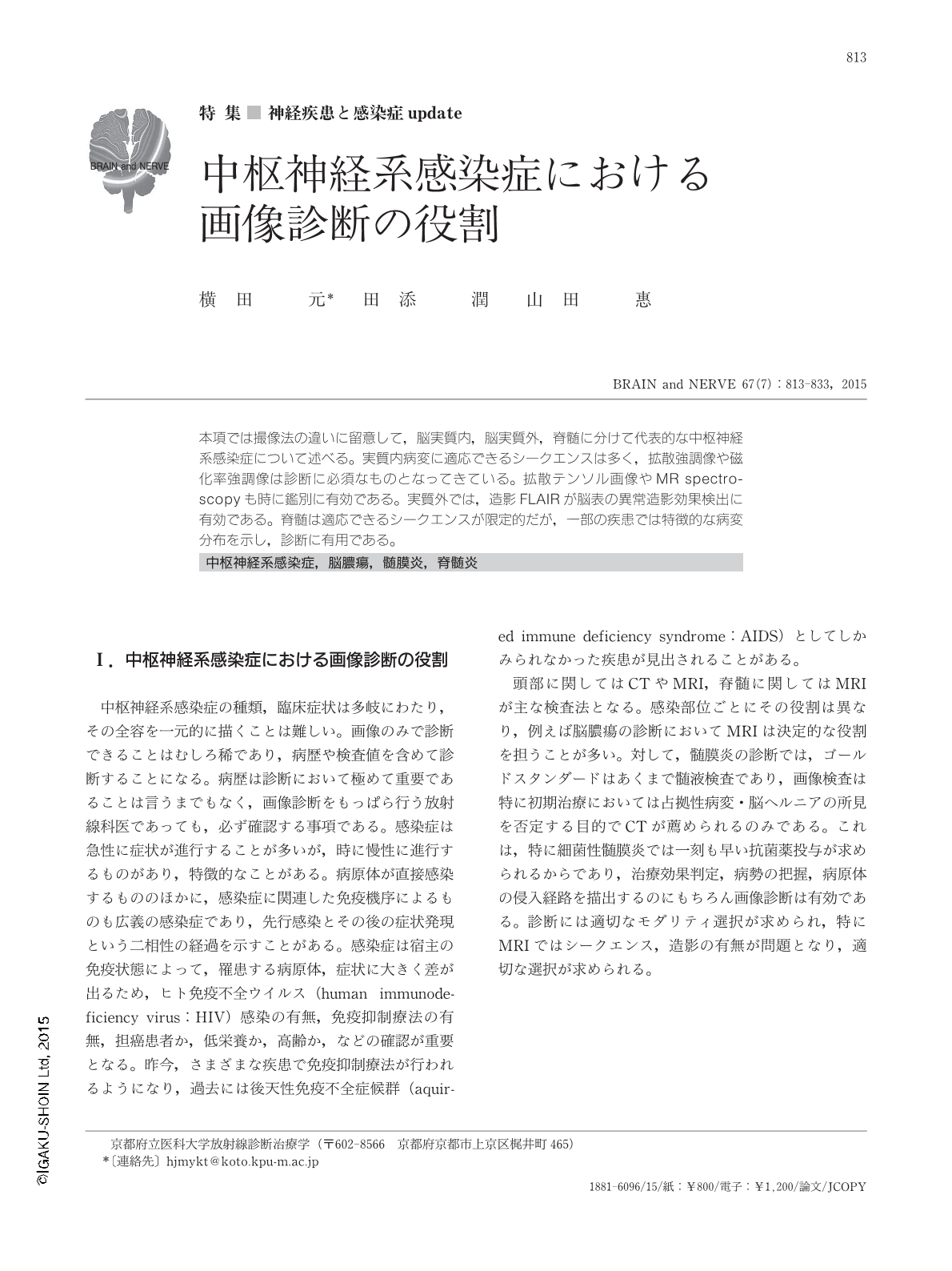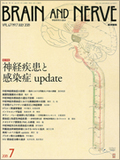Japanese
English
- 有料閲覧
- Abstract 文献概要
- 1ページ目 Look Inside
- 参考文献 Reference
本項では撮像法の違いに留意して,脳実質内,脳実質外,脊髄に分けて代表的な中枢神経系感染症について述べる。実質内病変に適応できるシークエンスは多く,拡散強調像や磁化率強調像は診断に必須なものとなってきている。拡散テンソル画像やMR spectroscopyも時に鑑別に有効である。実質外では,造影FLAIRが脳表の異常造影効果検出に有効である。脊髄は適応できるシークエンスが限定的だが,一部の疾患では特徴的な病変分布を示し,診断に有用である。
Abstract
Many infections invade the central nervous system. Magnetic resonance imaging (MRI) is the main tool that is used to evaluate infectious lesions of the central nervous system. The useful sequences on MRI are dependent on the locations, such as intra-axial, extra-axial, and spinal cord. For intra-axial lesions, besides the fundamental sequences, including T1-weighted images, T2-weighted images, and fluid-attenuated inversion recovery (FLAIR) images, advanced sequences, such as diffusion-weighted imaging, diffusion tensor imaging, susceptibility-weighted imaging, and MR spectroscopy, can be applied. They are occasionally used as determinants for quick and correct diagnosis. For extra-axial lesions, understanding the differences among 2D-conventional T1-weighted images, 2D-fat-saturated T1-weighted images, 3D-Spin echo sequences, and 3D-Gradient echo sequence after the administration of gadolinium is required to avoid wrong interpretations. FLAIR plus gadolinium is a useful tool for revealing abnormal enhancement on the brain surface. For the spinal cord, the sequences are limited. Evaluating the distribution and time course of the spinal cord are essential for correct diagnoses. We summarize the role of imaging in central nervous system infections and show the pitfalls, key points, and latest information in them on clinical practices.

Copyright © 2015, Igaku-Shoin Ltd. All rights reserved.


